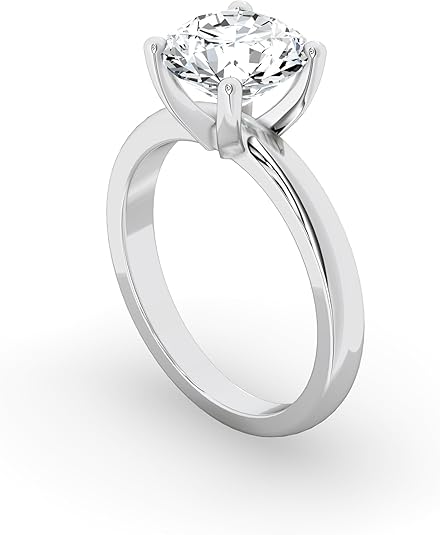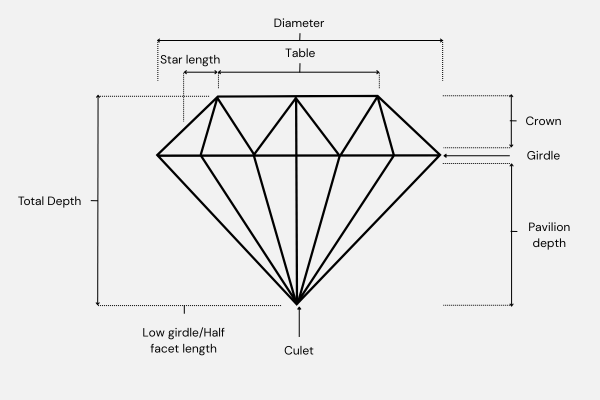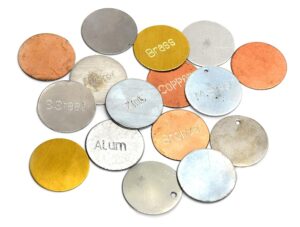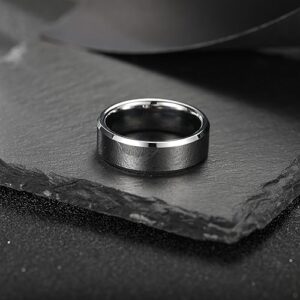Have you ever walked into a jewelry store, saw a bunch of shiny diamonds, and wondered—why do some sparkle more than others?
The secret often lies in something most people overlook: the diamond cuts.
Table of Contents
What Is a Diamond Cut?
Diamond cut refers to how well a diamond’s facets are arranged and proportioned to reflect light. It affects how much the diamond sparkles, shines, and catches the eye. Unlike diamond shape (like round or oval), cut is about the quality of the diamond’s angles, proportions, and symmetry. A well-cut diamond returns more light, making it look more brilliant and beautiful. Out of the 4Cs (cut, color, clarity, and carat), cut has the biggest impact on a diamond’s beauty. Only round brilliant diamonds receive official cut grades because they follow a standardized facet pattern.
Diamond Cut vs Shape vs Quality
| Term | What It Means | Why It Matters |
|---|---|---|
| Cut | How well a diamond is crafted (angles, proportions, symmetry) | Affects sparkle, brilliance, and light reflection |
| Shape | The outline of the diamond (round, oval, heart, etc.) | Impacts the diamond’s style and appearance |
| Quality | Overall grade based on the 4Cs (cut, color, clarity, carat) | Determines value, beauty, and price |

Why Diamond Cut Important?
The cut of a diamond affects how it sparkles. It’s all about how well the diamond’s facets (the flat surfaces) are shaped and angled. When a diamond is cut properly, it reflects light in a way that makes it shine brightly, showing off flashes of white light and color. This is called brilliance and fire.
On the other hand, if the diamond is cut poorly, it won’t reflect light properly. Even if the diamond has great color or clarity, it will look dull and less sparkling.Cut is one of the most important things to consider when buying a diamond because it directly impacts how beautiful it looks. So, if you want a diamond that truly shines, focus on its cut quality.
The GIA Cut Grading System
Let’s talk about the Gemological Institute of America (GIA)—they’re like the gold standard for grading diamonds. GIA gives diamonds a cut grade on a scale from:
- Excellent – maximum sparkle
- Very Good – still stunning, slightly less light return
- Good – decent performance
- Fair – duller look, less value
- Poor – very little brilliance
If you want a diamond that dazzles, go for Excellent or Very Good cuts.
✓ Pro Tip: Even if you lower the carat or clarity, a great cut will keep your diamond looking beautiful.
How Diamond Cut Affects Sparkle and Value
Let’s be simple—when people say they want a “beautiful” diamond, what they really mean is they want one that has dazzling sparkle.
But what most people don’t know is that sparkle isn’t just luck—it’s science. And it all comes down to the cut.
Cutting a diamond is a careful process that shapes the stone and decides how well it reflects light. The sparkle, or brilliance, depends on three main factors:
1. Proportions
Proportions refer to the balance of a diamond’s parts—like how tall the crown is, how deep the pavilion goes, and how wide the table is. These angles and measurements decide how light moves through the diamond. When the proportions are right, more light reflects back out of the top, making the diamond sparkle with brightness, fire, and life.
2. Symmetry
Symmetry means how evenly the diamond’s facets are shaped and arranged. If the cuts are off-center or uneven, the light won’t bounce around properly, and the diamond may look dull or uneven.
3. Polish
Polish is how smooth and flawless the diamond’s surface is after cutting. Tiny scratches or marks can block light or make the diamond look cloudy. A well-polished diamond has a clean, shiny surface that lets the sparkle show.

Types of Diamond Cuts (Cutting Styles)
Let’s explore the main types of diamond cutting styles so you can pick the one that truly fits your style and needs.
Brilliant Cut
The brilliant cut is designed to shine the most. It has many small facets, which are carefully arranged to bounce light back out of the diamond. This creates a lot of sparkle—especially in sunlight or bright lights.
The round brilliant cut is the most famous and common one. It has 57 or 58 facets and is often used in engagement rings. It’s loved for its bright shine and classic look.Other brilliant cuts include oval, pear, heart, and marquise shapes. These have a similar sparkle but in different outlines.
Step Cut
Step cuts are very different from brilliant cuts. Instead of many small facets, they have long, flat ones that look like stairs. This creates a soft shine rather than lots of sparkle.The most well-known step cuts are the emerald cut and the Asscher cut.
These diamonds show off clarity more than brilliance. That means they need to be very clean on the inside, because flaws (called inclusions) can be more visible.They look modern and classy—perfect for someone who likes a bold, clean design.
Mixed Cut
Mixed cuts combine features of both brilliant and step cuts. They often have brilliant-style facets on the top and step-style facets on the bottom. This gives a nice mix of sparkle and depth.
The princess cut, radiant cut, and some cushion cuts fall into this group. These diamonds are usually square or rectangular and look modern but still shine beautifully.
Rose Cut
The rose cut is an old diamond style that’s becoming popular again. It has a flat bottom and a rounded top with triangular facets that look like the petals of a rose—hence the name.
It doesn’t sparkle like modern cuts because it doesn’t have the deep parts needed to reflect light strongly. But it has a gentle, soft glow that feels very romantic and vintage.
Rose cuts are often used in antique rings or with colored stones. They’re perfect for people who love a one-of-a-kind, old-fashioned feel.
How Diamond Cut Affects Price
The cut of a diamond significantly impacts its sparkle, brilliance, and overall beauty—and in many cases, it can influence the price more than carat weight or color. A well-cut diamond reflects light more effectively, making it appear brighter and even larger than poorly cut stones of the same carat. That means you could choose a slightly lower carat or color grade, but if the cut is excellent or ideal, it will still look stunning and valuable.
Frequently Asked Question's
Facets are the flat, polished surfaces on a diamond. Think of them like tiny mirrors that are precisely angled to catch and reflect light. The number, shape, and arrangement of these facets—especially in well-cut diamonds—determine how much light bounces around inside and reflects out, creating sparkle and fire.
A poor cut diamond is one with proportions, symmetry, or polish that fail to reflect and refract light effectively. These diamonds appear dull or lifeless, even if they have high color or clarity grades. Poor cutting causes light to leak out the sides or bottom rather than reflecting back through the top, which dramatically reduces sparkle.
Final Sparkle: Why Diamond Cut Matters Most
Now that you’ve explored the world of diamond cuts, you can probably see why this isn’t just a detail—it’s the heart of a diamond’s beauty.
A diamond’s cut affects everything: how it catches the light, how big it looks, how much it costs, and how special it feels when you wear it. Whether you’re drawn to the timeless Round Brilliant, the bold Princess, or the vintage vibe of a Rose cut, understanding the cut helps you make a more confident, smart jewelry decision.
What’s your favorite diamond cut—and why? Do you have a dream ring in mind, or a question about cuts we didn’t cover?
We’d Love to Hear From You!
Drop your thoughts in the comments below—we’re always excited to chat and help you sparkle smarter.



